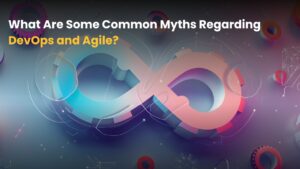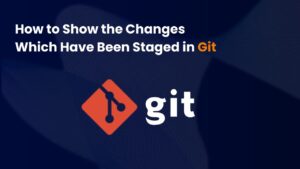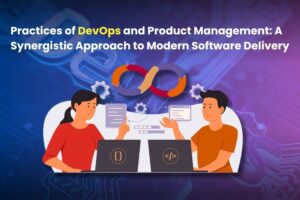As organizations increasingly integrate AI into their DevOps practices, it is crucial to address the security risks that accompany this technological evolution. While AI offers tremendous potential for enhancing efficiency and productivity, it also introduces vulnerabilities that can be exploited by malicious actors.
One of the key issues is data privacy. AI systems generally rely on enormous volumes of data to learn and make judgments. Inadequate protection of sensitive data can result in serious breaches that jeopardize the integrity of the business and the confidence of its clients. Furthermore, adversarial assaults, in which attackers alter input data to generate undesirable outputs, might target the algorithms themselves. As organizations increasingly integrate AI into DevOps, they unlock automation, efficiency, and improved decision-making. However, this connection also creates substantial security vulnerabilities. Understanding and addressing these risks is key to creating a safe and dependable DevOps pipeline.
An excellent setting for improving these important skills is offered by DevOps Training in Pune.
Common Security Risks in AI-Driven DevOps
AI-driven DevOps has revolutionized software development and operations by automating processes, enhancing efficiency, and reducing human error. However, integrating AI into DevOps also introduces several security risks that organizations must address to ensure robust protection of their systems and data. Some of the most prevalent security threats in AI-driven DevOps are listed below:
1. Data Privacy and Compliance Issues
AI systems in DevOps rely on vast amounts of data, including sensitive user information, proprietary code, and system logs. Unauthorized access, data leakage, or improper handling of this data can lead to severe compliance violations (e.g., GDPR, HIPAA) and financial penalties.
2. Vulnerabilities in AI Models
Adversarial assaults, in which harmful inputs are intended to control AI behavior, can affect AI models, particularly those that use machine learning. Attackers may exploit model weaknesses to alter predictions, disrupt automation, or gain unauthorized access to systems.
3. Bias and Insecure Decision-Making
AI models used in DevOps automation can inherit biases from training data, leading to flawed security assessments and misconfigurations. Biased models may fail to detect threats effectively or may prioritize non-critical issues over urgent security risks.
4. Pipeline and CI/CD Security Risks
AI-driven DevOps relies on continuous integration and continuous deployment of CI/CD pipelines, which can become targets for cyber threats. Attackers may exploit weak authentication, inject malicious code, or manipulate automated deployments to compromise software integrity.
5. Insider Threats and Model Poisoning
Malicious insiders or compromised accounts can introduce poisoned data into AI models, leading to corrupted outputs that degrade system security. This risk is particularly concerning when AI-driven automation controls critical infrastructure or decision-making processes.
6. Third-Party Dependencies and Open-Source Risks
Many AI-powered DevOps tools rely on open-source libraries and third-party integrations. These dependencies may contain vulnerabilities, backdoors, or outdated components that expose the system to exploitation if not properly managed.
7. Lack of Explainability and Auditing
AI-driven decisions in DevOps can sometimes lack transparency, making it difficult to audit security-related actions and responses. Without clear visibility into how AI models operate, organizations may struggle to detect anomalies and investigate security incidents effectively.
8. Automated Attack Surface Expansion
AI-powered automation increases the attack surface by accelerating deployment processes, scaling infrastructure dynamically, and integrating multiple services. Without adequate security controls, AI-driven DevOps environments can become attractive targets for cybercriminals.
Mitigation Strategies
Proactive steps called mitigation strategies are intended to lessen or completely eradicate the risks connected to possible dangers, vulnerabilities, or threats. These strategies are crucial in various domains, including environmental management, cybersecurity, disaster preparedness, and business continuity. Effective mitigation methods provide resilience and sustainability by decreasing the effect of unfavorable occurrences.
1. Environmental Mitigation Strategies
Environmental mitigation strategies focus on reducing the ecological footprint and preventing environmental degradation. Key approaches include:
- Planting trees to counteract deforestation and improve carbon sequestration is known as reforestation or afforestation.
- Sustainable Resource Management: Implementing conservation techniques to reduce resource depletion.
- Pollution control measures: Include trash disposal and emission regulations to preserve the purity of the air and water.
- Adoption of Renewable Energy: Changing from fossil fuels to renewable energy sources like wind and solar.
2. Cybersecurity Mitigation Strategies
Cybersecurity threats, such as hacking, phishing, and malware attacks, require robust mitigation measures, including:
- Regular Software Updates: Keeping systems and applications updated to patch vulnerabilities.
- Adding additional security layers to access restrictions is known as multi-factor authentication, or MFA.
- Data Encryption: ensuring data confidentiality by encrypting sensitive information.
- User Awareness and Training: Teaching staff members how to identify and stop online threats.
- Creating protocols to effectively handle security breaches is known as incident response planning.
3. Disaster Preparedness Mitigation Strategies
Both man-made and natural disasters can have disastrous effects.Key mitigation strategies include:
- Infrastructure Resilience: Constructing buildings that withstand earthquakes, floods, and other hazards.
- Early Warning Systems: Deploying technology to identify and inform people about imminent disasters
- Emergency Preparedness Plans: Establishing protocols for evacuation, medical response, and resource distribution.
- Community Engagement: Educating residents on disaster response and preparedness measures.
4. Business Continuity Mitigation Strategies
Organizations adopt mitigation techniques to preserve operations amid emergencies. Key strategies include:
- Risk Assessment and Management: Finding and assessing possible company hazards is known as risk.
- Diversification: This is the process of lowering reliance on a single source of income or supply chain.
- Backup and Recovery Plans: Ensuring data and system redundancies to prevent operational disruptions.
- Crisis Communication Plans: Developing clear communication channels for stakeholders during emergencies.
5. Financial Risk Mitigation Strategies
Economic downturns and market volatility are examples of financial risks that call for strategic solutions, such as:
- Diversified Investment Portfolios: Spreading investments to minimize losses.
- Hedging Strategies: Using financial instruments to guard against market swings
- Emergency Funds: maintaining reserves to handle unforeseen financial crises.
- Insurance Coverage: protecting assets and liabilities through comprehensive insurance policies.
Conclusion
Mitigation strategies are essential for reducing risks and enhancing resilience in various sectors. Whether addressing environmental concerns, cybersecurity threats, disasters, business disruptions, or financial uncertainties, proactive planning and implementation of mitigation measures ensure preparedness and long-term sustainability. Organizations, governments, and individuals must continuously assess and refine their mitigation strategies to adapt to evolving risks and challenges.
While integrating AI into DevOps has revolutionary advantages, there are also serious security risks. AI security requires a proactive approach from organizations that includes strong data protection, adversarial resilience, and ongoing monitoring. By aligning AI-driven DevOps with strong security principles, businesses can leverage AI’s potential while safeguarding their infrastructure and data.






